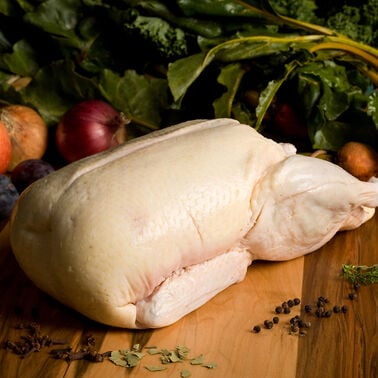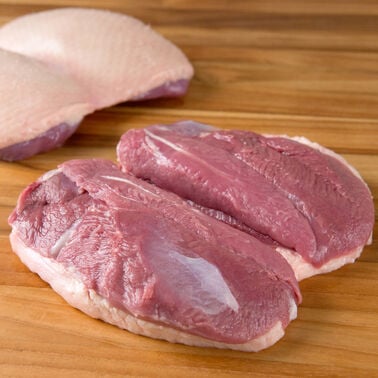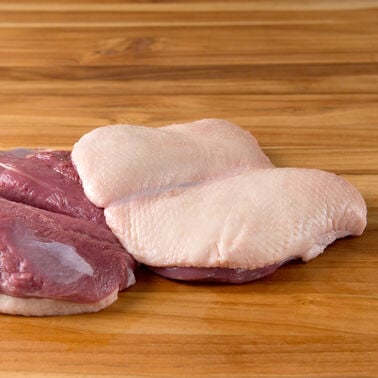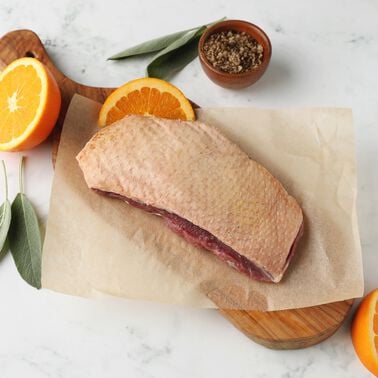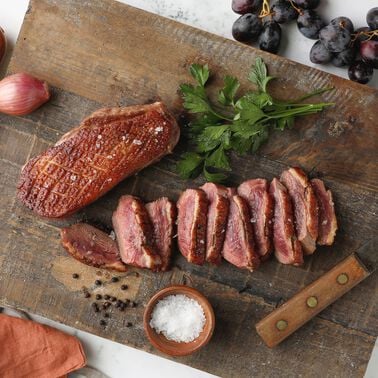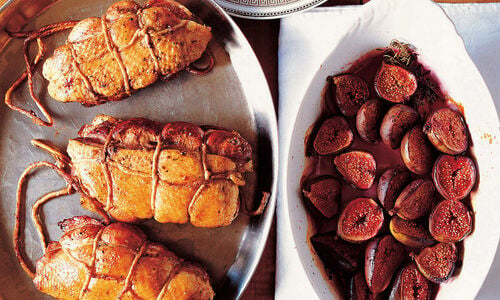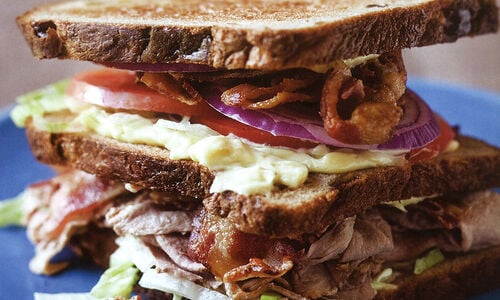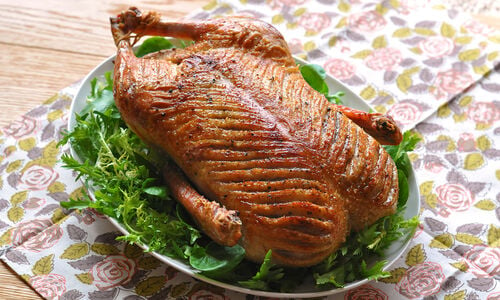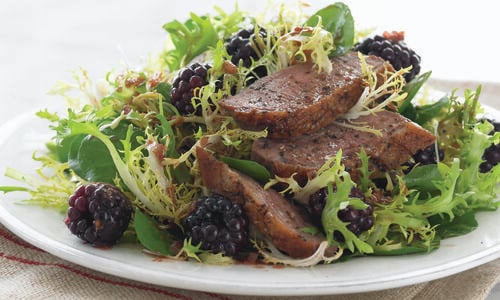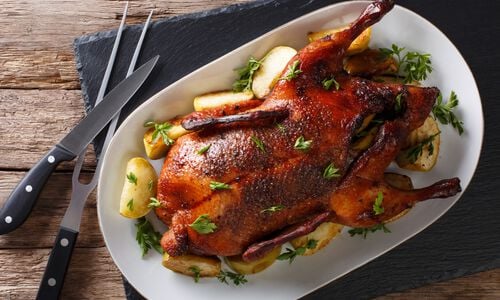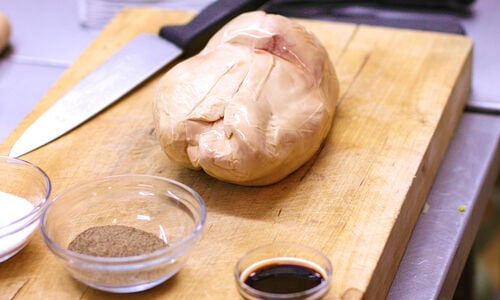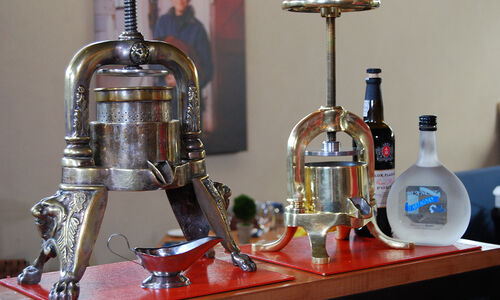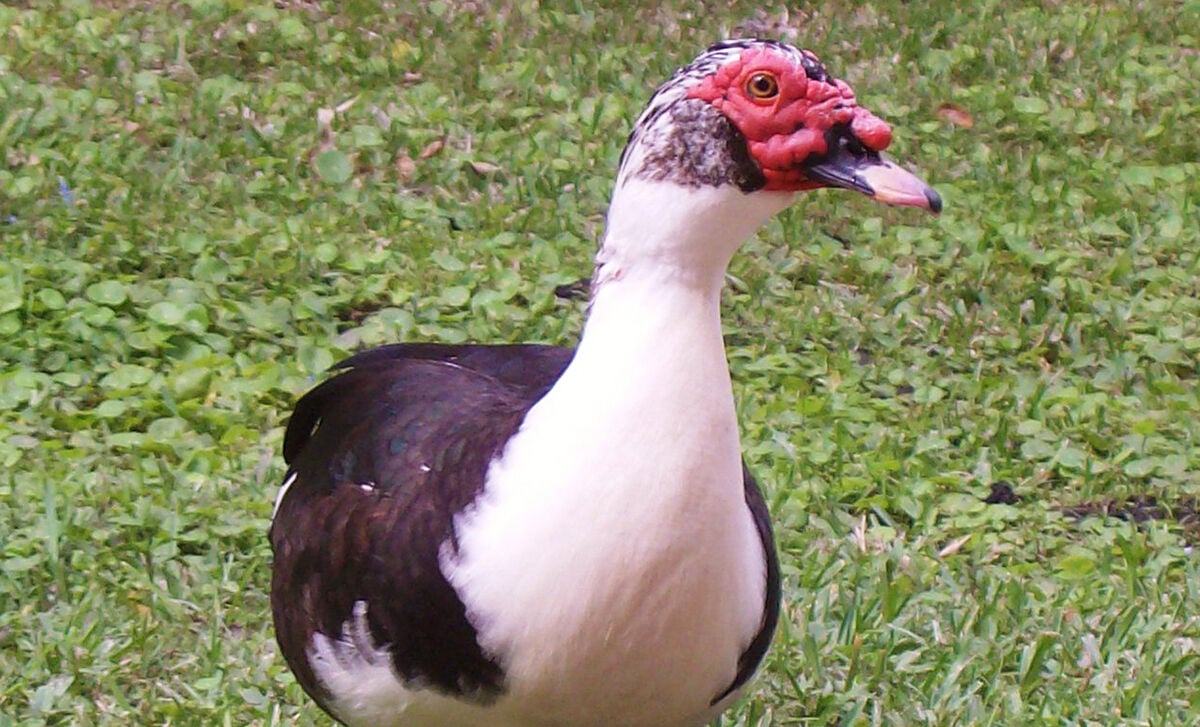
This recommended it to domestication in North America, and also made possible flocks of feral ducks in parks. Muscovy ducks are brown-black in color, with some pale wing coloration, but many of the domesticated ducks have been bred for white feathers. The drake, or male, grows from 12 to 15 pounds though the hen, or female, is much smaller, weighing from 8 to 10 pounds. Both have what is called a caruncle - a fleshy, bulbous growth- on the head. This is a breed distinctive trait. They are also quiet ducks - the male makes a low hissing sound, not a full quack, and the females makes a short, weak quack called a pip, which sounds like a flute.
Muscovies are excellent fliers and like perching in trees, aided by sharp claws on their webbed feet. And they like to eat mosquitoes, spiders, slugs and bugs of all kinds, which makes them an ideal addition to a poultry barnyard.
Sometimes called Barbarie or Barbary duck, the Muscovy duck is thin-skinned, low in fat, and has deep red, mildly gamy meat which is sometimes compared to roast beef for its flavor, and veal for its tenderness. There’s also much more of it. The carcass of a Muscovy duck is heavier than most other domestic ducks, and has a larger breast that its Pekin counterpart, with up to 40% less fat than that breed. And while it may appear to cost more per pound than other ducks, Muscovy duck has a higher meat to bone ratio, which means you are getting more meat and less bone for the money!
And being so lean, the meat renders out less fat in cooking. Muscovy ducks have less fat and less calories per pound than turkey. All of this contributes to a flavorful and healthy eating experience. Europeans have been enjoying the Muscovy duck meat for a long time, and the popularity of this duck is growing in the United States.
D’Artagnan’s Muscovy ducks are raised without any growth hormones, steroids or antibiotics on a farm in California’s sunny, dry San Joaquin Valley by a producer that has been breeding ducks for more than 35 years. The ducks are fed a diet of corn, soy, wheat and alfalfa and are left to grow in open barns for up to ninety days, which means that they develop a meaty, full-flavored breast.
